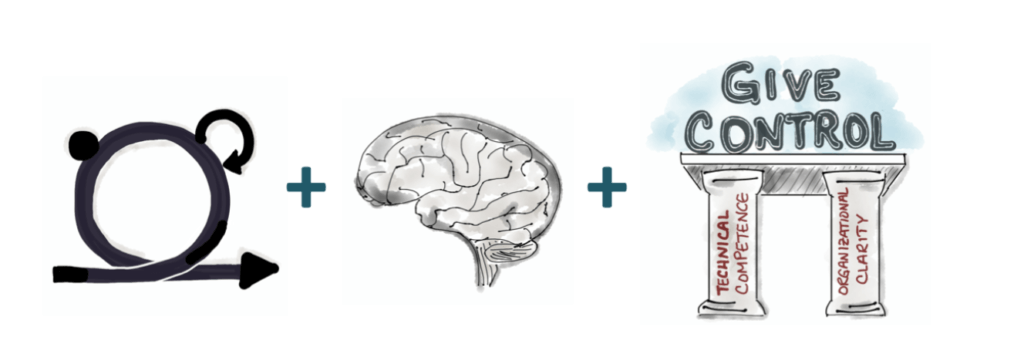Our Agile evolution, and then the revolution


There’s a lot we’ve learned in all the years we’ve been working with organizations looking to deliver value to their customers faster, and have happier employees. Discovering Agile methodologies: XP, Scrum and SAFe changed our lives. But the real revolution happened when we read L. David Marquet’s amazing book Turn The Ship Around, which later turned into Intent-Based Leadership.
In the early days, being able to bring all the techniques that enabled understanding together, planning together, validating together and reflecting together to our clients was a game changer.
“You mean you can actually understand requirements and then document them later? You can plan together in a way that allows you to only go into the details of things you’ll do in the immediate future – thus eliminating wasting time planning things we may never actually do? And, this planning enables us to shift direction depending on what our customers want or the market suggests? People doing the work plan the work, and then decide themselves how to get things done. Then, you develop the features in short sprints and show what you’ve made early to customers and get feedback that guides next steps. Awesome! Yes, and we don’t end there: we also pause to reflect on what went well and what didn’t in the sprint and take in an improvement item into the next sprint. Love it!”
And yet, Agile by itself was not enough. We could only get so far. Management didn’t always understand why Agile processes alone didn’t work; that Agile is really about people. And when we talked about improving communication and collaboration, we were met with, “Don’t talk to us about the fluffy stuff. Just implement the process!” Finding the proof about why communication and collaboration was the answer to why Agile works was the next step in our Agile evolution.
The proof came in the study of neuroscience. Turns out all that understanding together, planning together, validating together and reflecting together stimulates the release of dopamine in our brains and pushes us to high performance. When we have autonomy, and have the ability to learn and improve, when we feel we have control over what we’re doing and have the clarity about why, we feel more motivated. And, we actually are more focused, curious and interested. Our prefrontal cortex is activated!
Our reality depends on highly motivated people doing great things. However, Agile and the neuroscientific evidence were also not enough to make it all work.
The revolution came when we read @L.David Marquet ‘s amazing book Turn the Ship Around! In 2012 and then taking those principles (which later became the foundation for Intent-Based Leadership®) into the equation.
Intent-Based Leadership® offers a way for us to rewire: to give control, trust and learn to be okay with not having all the answers. It’s a way of leading where the leader sets the environment for others to excel and act to the maximum extent of their creativity and intellect; where team members come to the leader describing what they see, what they think, and what they intend to do. The result: the culture of the organization shifts from one of permission and waiting, to intent and action, and people feel more valued and come to better solutions.
BINGO! Now, we had Agile ways of working + the neuroscience behind why Agile works and how people get to the best solutions + the leadership mechanisms to support people as they make changes to how they interact with others and act within their organizations.
Having the neuroscientific knowledge and using it together with the principles and mechanisms of Intent-Based Leadership®, we’re helping organizations make Agile ways of working rock! What comes next, we’ll have to see. As always, we’re looking forward to finding out…TOGETHER.

Product
Intent-Based Leadership®
Shift the organizational culture from permission and waiting, to intent and action.